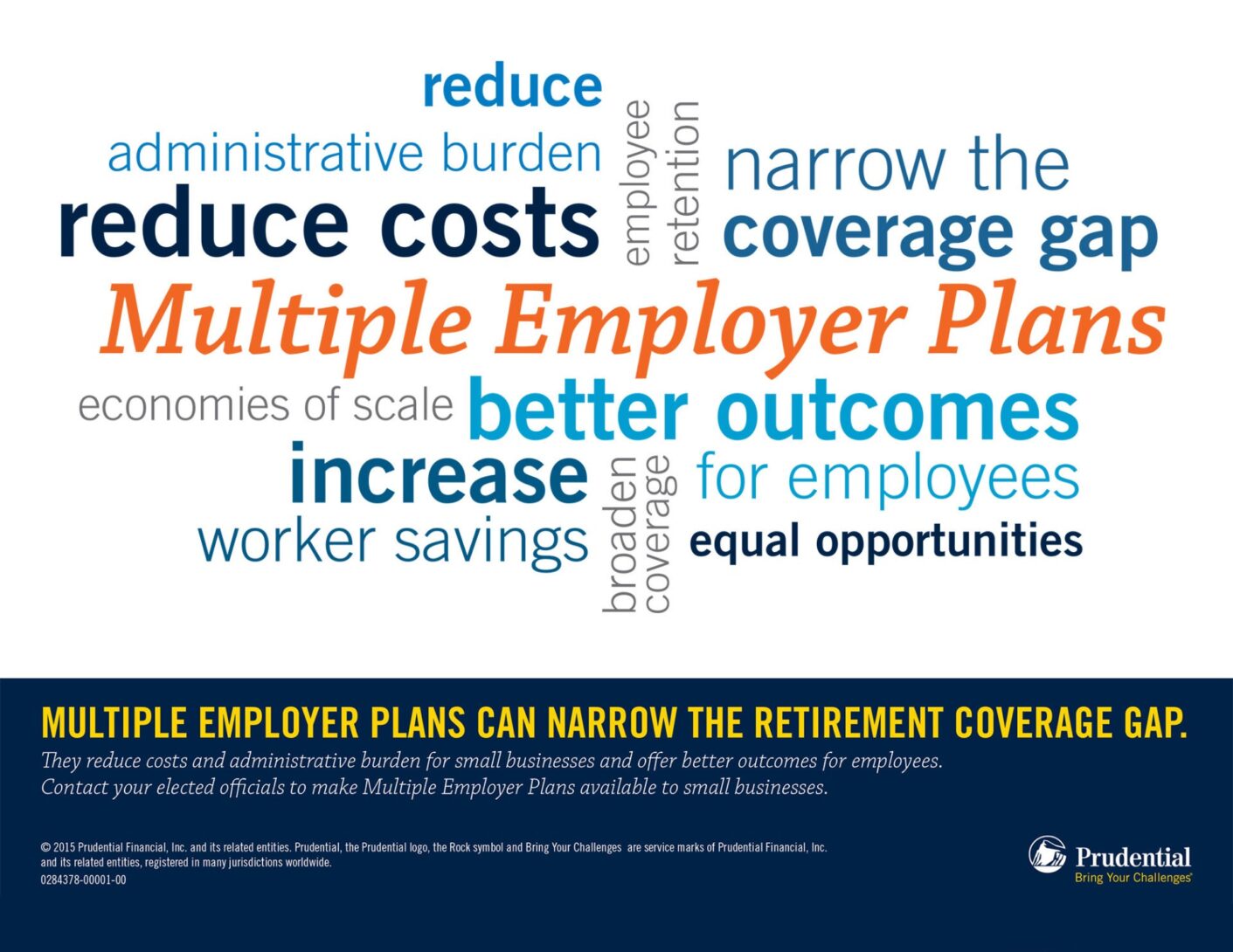More than half of the 55 million Americans who are not offered a retirement plan through their employers work for small businesses. While some see this longstanding coverage gap among small firms as an unsolvable problem, others see a market opportunity. This is the fourth blog post in a series that will feature perspectives from entrepreneurs and intrapreneurs in both the for-profit and non-profit sectors who are using technology and other innovations to reach this hard-to-serve population. We hope that the resulting insights will help other market players and federal and state policymakers better understand what it will take to achieve a truly universal retirement savings system in the US.
Employer-sponsored retirement savings plans have become a critical component of the private retirement system in the U.S., and a proven tool for helping working Americans prepare for life after work.
Unfortunately, approximately 55 million Americans do not have access to a retirement plan on the job.
This is called the retirement coverage gap, and a significant number of those affected are employed by small businesses or are freelance workers (often called 1099 or “gig” workers). Indeed, nearly 50% of employees of businesses with fewer than 100 workers don’t have access to a workplace retirement plan. Additionally, women and people of color are disproportionately impacted, since they make up a large proportion of small business employees.
As a defined contribution (DC) plan recordkeeper and investment services provider, Prudential is on the frontlines of trends in workplace retirement savings. One of the key emerging trends we see in the DC market is aggregation- the pooling of plans and participants into larger buying groups. Aggregation will likely be the primary means of solving the retirement coverage gap for the 55 million uncovered private-sector workers in the United States, as it offers economies of scale, administrative simplicity, and reduced exposure to fiduciary liability.
Aggregation can take a number of forms, all of which can be effective in reducing the retirement coverage gap. One approach to aggregation is exemplified by state efforts to address the retirement coverage gap in the private sector. Generally, these programs require employers who choose not to offer a retirement savings program to their employees, to automatically enroll their workers into the state-sponsored plan. Most of the state-sponsored programs under consideration are structured as payroll deduction IRAs. Other state-sponsored programs use a marketplace model, and most recently Vermont has structured their program as a MEP (see below). While it is unclear how many states will offer payroll deduction IRA programs in the absence of guidance from the U.S. Department of Labor regarding the program’s status under ERISA, there are indications that several states will continue to pursue this method of aggregation to promote retirement savings.
Another approach to aggregation is multiple employer plans (MEPs). MEPs are single, professionally administered plans in which multiple employers opt to participate. Such plans enable unrelated employers to join together in plan sponsorship to benefit from shared administration, reduced costs and limited fiduciary responsibilities. MEPs have been used successfully for years by trade associations and professional employee organizations. While current ERISA and tax law interpretations limit the ability of unrelated employers to take advantage of MEPs, there is strong and increasing public support for removing such constraints. Washington lawmakers on both sides of the political aisle, the U.S. Chamber of Commerce, AARP, many affinity groups and the financial services industry are among the constituents pressing for a broader application of MEPs.
If legal constraints on MEPs are addressed, there appear to be at least two viable models for expanding MEP sponsorship and participation:
Model 1: Association-Sponsored MEP (e.g., Chamber of Commerce)
The first model is MEP sponsorship by associations with a diverse employer membership. Forming a MEP provides an association with an enhanced value proposition to its members. In this model, one or more association officers typically serve as the plan’s fiduciaries and trustees, who in turn assume responsibility for the plan or engage benefits and investment professionals to manage the day-to-day operations of the plan.
Model 2: Advisor/Aggregator-Sponsored MEP
The second model is MEP sponsorship by an advisor group or organization. Under this model, the MEP would be sponsored by an advisor or other benefits/investment professional group and offered to smaller and mid-size employers as an alternative to sponsoring a standalone retirement plan. The sponsoring group or organization could serve as the plan’s fiduciary and trustee or the MEP could engage an independent third party to serve in such capacities, while the advisor group provides other fiduciary (investment management) and non-fiduciary (administration and recordkeeping) services to the MEP, subject to conflict of interest and other ERISA rules.
In these models, the employers joining a MEP would benefit from reduced administrative responsibilities, and a limited fiduciary role. Specifically, employers would be responsible for prudent selection of the MEP plan sponsor, completing the adoption agreement, and timely forwarding of payroll information. The MEP plan sponsor or delegate would be responsible for hiring and monitoring providers, for determining plan design, and for ERISA compliance.
Application of these MEP models can extend to small businesses, state workers and 1099 workers—any segment that would benefit from the ability to form pools of larger buying groups.
The forms of aggregation discussed above bring a new set of challenges to the industry. The pooling of plans and participants into buying groups are an important departure from current individual-based and employer-based record-keeping models. Technological innovation will play a vital role in solving these issues. Collaboration between traditional recordkeepers, aggregators and the FinTech industry to create a robust low-cost platform is likely to be an important component of an effective solution.
Bennett Kleinberg is a Vice President for Innovation, Product Development, Market Development, and Retirement for Prudential Financial. The views and opinions of the author are his own and do not necessarily reflect the view of the Aspen Institute Financial Security Program or its funders.

